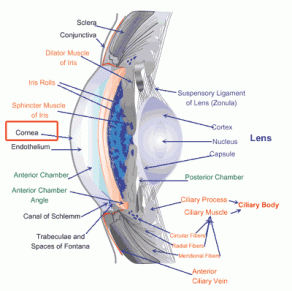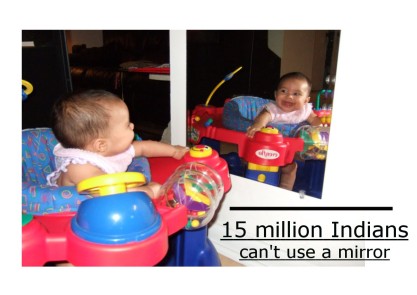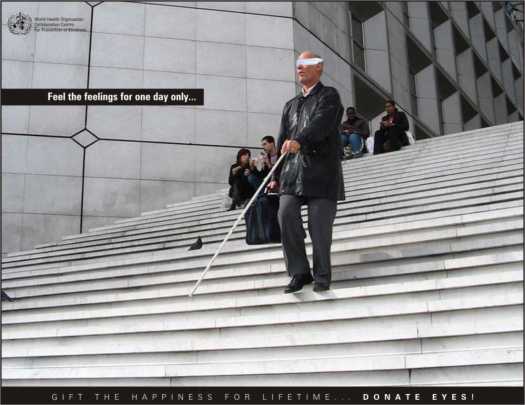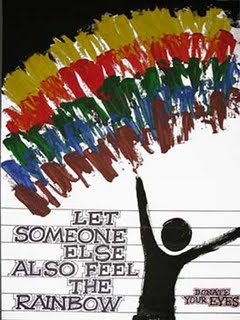Some FAQ's on Eye Donation ...
What is Cornea?
The cornea is the clear window covering the front of the eye. It is the main focusing element of the eye. Vision will be dramatically reduced if the cornea becomes cloudy from disease.

What is Corneal Blindness?
Corneal blindness means that one's cornea, which is the transparent and thin outer layer of the eye, becomes clouded due to
- Injuries
- Infections
- Nutrition deficiency especially in Childhood
- Chemical burns
- Post operative complications & infections.
Why Eye Donation?
To begin with for a selfish reason; our eyes can live even after our death. Secondly, more importantly, we can light the life of two blind people by donating our eyes after our death. Thirdly, not to mention, eye donation is the noblest of all causes.
There are currently an estimated 15 million blind people in India . 6.8 million of these suffer from corneal blindness with vision less than 6/60 in atleast one eye, and of these, about 1 million have bilateral corneal blindness. If the present trend continues, it is expected that the number of corneally blind individuals in India will increase to 8.4 million in 2010 and 10.6 million by 2020.
Of these atleast 3 million can be benefited by corneal transplantation. Thus, to effectively meet the evergrowing demand, we need around 150,000 corneal transplants to be performed every year. However, the current supply is only 22000 corneas per year.

Who can Donate Eyes?
Anybody of any age can donate eyes. Even if the deceased has medical history of hypertension, diabetes, asthma, tuberculosis etc., even spectacle wearers and people who have undergone cataract operation can donate eyes.
Practically anybody from the age of 1 year. There is no upper age limit. Spectacle Wearers, persons who had cataract surgery, diabetics and hypertensives can donate eyes. Person blind from retinal or optic nerve disease donate his eyes.
The ultimate decision about usage for transplantation will be made after evaluation.
Who can't Donate Eyes?
- Death from unknown cause.
- Death due to infectious caused viz. Rabies, syphilis, infectious hepatitis, septicemia, and AIDS.
- Any frank ocular infection, previous refractive surgery.
What is an Eye Bank?
An Eye Bank is a charitable organization without a profit motive. They are purely functioning for the benefit of the society. The eye banks facilitate removal of eyes, processing of eyes and evaluation of the eyes and distribute them to the needy.

How to Contact Nearby Eye Bank?
A special number 1919 (BSNL) has been allotted for eye banks. Most of the eye banks all over the country have this number, once information for eye donation is given here; the eye bank sends its team to collect the eyes. By calling this number details about eye donation can also be had.
What is the procedure to Donate Eyes?
- Close the eyelids of the deceased
- Wrap some ice cubes in damp cotton, & keep them on the eyes. This prevents the tissue from drying up, & helps keep it fresh.
- Switch off the fan
- Raise the head of the deceased slightly by placing a pillow underneath
- Contact the nearest eye bank as quickly as possible.
- Give the correct address with specific landmarks and telephone number to enable the eye bank team locate the place easily
- If the death certificate from the physician is available, keep it ready
- Eye donation can be done only with the written consent of the next of kin in the presence of two witnesses

How do I ensure that the eyes so donated would not be misused?
Eye Banks are covered under "Transplantation of Human Organs Act" 1994. It is a criminal offence to buy or sell organs. The Government issues certificate of registration to eye banks and has a provision to inspect them regularly. In case a complaint is filed against any eye bank, the government can take legal action.
What is the use of Donated Eyes?
The eyes, which are received through such magnanimous gestures, are of great benefit to the society. The front clear and transparent tissue of the eye called the cornea can be used to restore vision to corneal blind person. The other portions of the eye are also used for training and research purposes to develop cures for some of the common eye diseases.
Tissue Evaluation
At the eye bank, the donor corneas strictly evaluated by various procedures including slit lamp examination. Serology examination, specular microscopic evaluation done by the specialist.
Tissue processing and preservation
At the eye bank, the corneas are removed from the eye ball and preserved in special storage solutions that can keep the corneal healthy for 14 days.
Tissue Distribution
Good quality corneas are used for Corneal Transplant surgeries. The donor corneas are used for various types of keratoplasty procedures including multiple procedures.
The donor sclera is preserved in absolute alcohol and used for various surgical procedures of our Glaucoma Services, Ocular Trauma and Oculo Plasty services.
And rests in part of donor eye ball are used for research by the research units of Micro Biology, Biochemistry, Ocular Pathology, Molecular Biology and genetics in our institution.
Famous Persons Who Pledged to Donate Eyes:
Actors Aishwarya Rai, Raveena Tandon, Lakshmi, Vikram Politicians : M K Stalin, Raj Thackery
Motivate and educate others about eye donationIn case any death incidents; motivate the next of kin of the deceased person to donate their eyes. Call your nearest eye bank Join Saaral and Participate in the Movement of Creating Awareness among the PublicForward this mail to Your Friends, Relatives, Colleagues, etc
K.Rammohan
www.saaral.co. in











0 comments:
Post a Comment